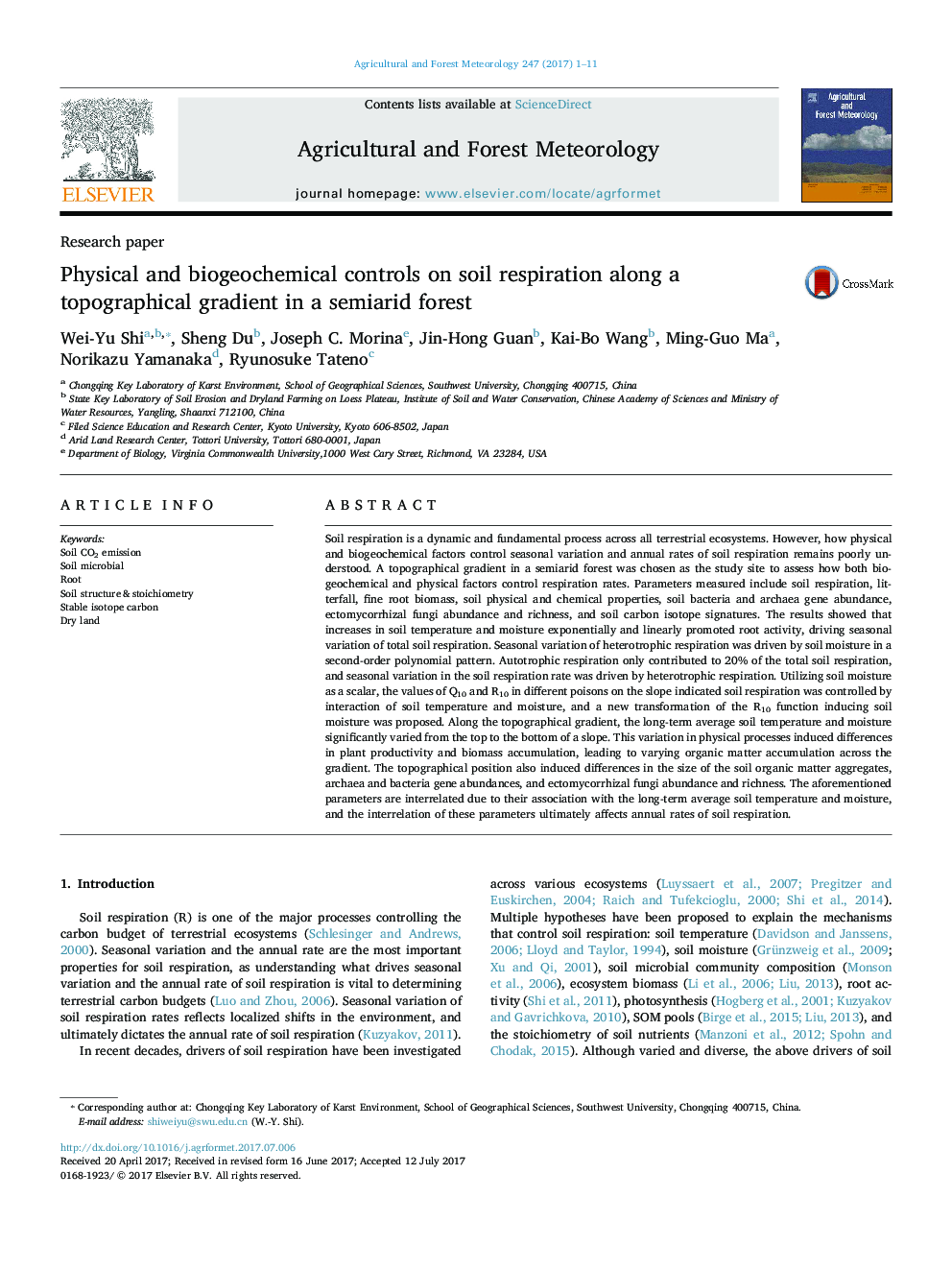| Article ID | Journal | Published Year | Pages | File Type |
|---|---|---|---|---|
| 6457733 | Agricultural and Forest Meteorology | 2017 | 11 Pages |
â¢Topography significantly influence physical and biogeochemical factors along slope.â¢Q10 and R10 along slope indicate R was controlled by interaction of T and W.â¢Seasonal variation of soil respiration was driven by heterotrophic respiration.â¢The factors are interrelated due to their association with the MAT and MAW.â¢The interrelation of these factors finally affect annual rate of soil respiration.
Soil respiration is a dynamic and fundamental process across all terrestrial ecosystems. However, how physical and biogeochemical factors control seasonal variation and annual rates of soil respiration remains poorly understood. A topographical gradient in a semiarid forest was chosen as the study site to assess how both biogeochemical and physical factors control respiration rates. Parameters measured include soil respiration, litterfall, fine root biomass, soil physical and chemical properties, soil bacteria and archaea gene abundance, ectomycorrhizal fungi abundance and richness, and soil carbon isotope signatures. The results showed that increases in soil temperature and moisture exponentially and linearly promoted root activity, driving seasonal variation of total soil respiration. Seasonal variation of heterotrophic respiration was driven by soil moisture in a second-order polynomial pattern. Autotrophic respiration only contributed to 20% of the total soil respiration, and seasonal variation in the soil respiration rate was driven by heterotrophic respiration. Utilizing soil moisture as a scalar, the values of Q10 and R10 in different poisons on the slope indicated soil respiration was controlled by interaction of soil temperature and moisture, and a new transformation of the R10 function inducing soil moisture was proposed. Along the topographical gradient, the long-term average soil temperature and moisture significantly varied from the top to the bottom of a slope. This variation in physical processes induced differences in plant productivity and biomass accumulation, leading to varying organic matter accumulation across the gradient. The topographical position also induced differences in the size of the soil organic matter aggregates, archaea and bacteria gene abundances, and ectomycorrhizal fungi abundance and richness. The aforementioned parameters are interrelated due to their association with the long-term average soil temperature and moisture, and the interrelation of these parameters ultimately affects annual rates of soil respiration.
